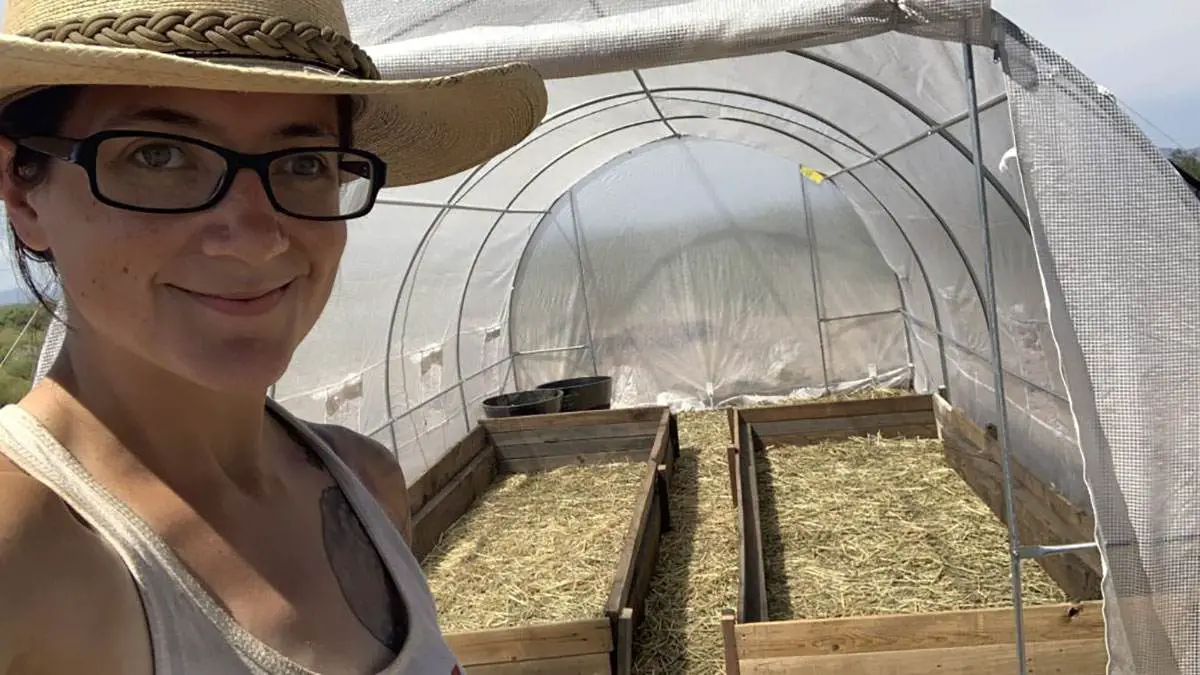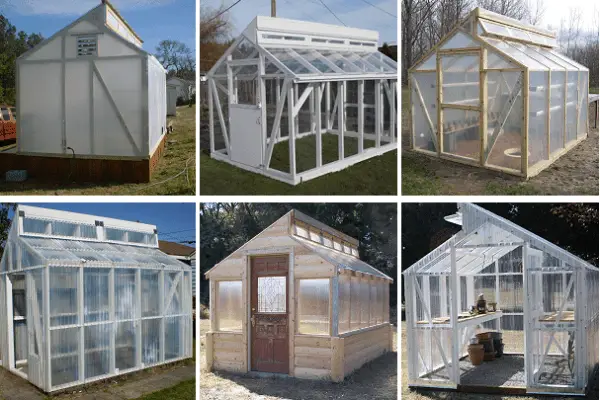Table of Contents
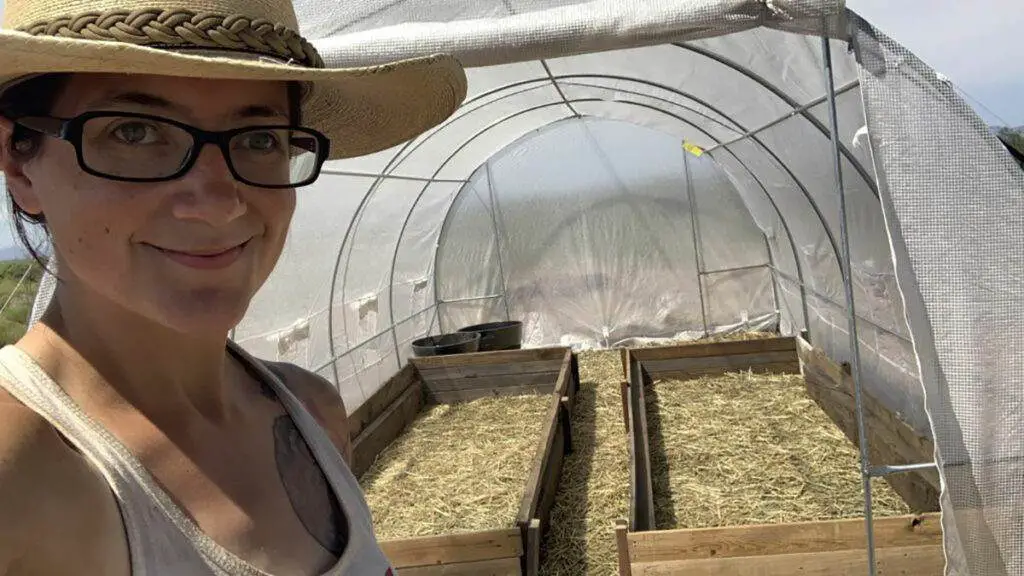
Can you build a greenhouse in the desert? Yes! It is a serious challenge, however.
I live in the Southwest, where we have blazing hot summer days and frigid winter nights. A greenhouse can be a great addition to anyone’s garden, regardless of where you live.
Having a desert greenhouse requires some planning that other regions of the U.S. might not have to consider, however. Make no doubt about it, growing vegetables in the desert year-round is a challenge.
If you want to extend your growing season into the fall or winter, a greenhouse is an excellent option because it can hold warm temps and keep your plants from being affected by frost.
I’ve had some serious trial and error with my greenhouse because I live in the desert. For the most part, we focus on plants that will thrive inside of it, such as tropical plants (like a dwarf banana tree) or plants that thrive in warmer weather.
It’s not just the trial and error with the plants, though. I had to have foresight into the type of weather conditions we regularly encounter, such as high winds. I’ll talk more about that in a bit.
Why get a Greenhouse in the Desert?
Greenhouses can be extremely useful for plants and flowers as they act as a protection from the heatwaves during the day and cold weather at the night. The sudden change in temperature in desert places is a big difficulty for plants to overcome. A greenhouse is responsible for shade, water, and temperature for plants in extremely hot weather. Thus, it increases the probability of plants living under these harsh conditions.
What Temperature is Harmful to Plants?
The temperature at or above 90 degrees Fahrenheit is harmful to most of plants. Prolonged exposure at this temperature can result in flowers drop-off, and finally, the plant dies due to a lack of water in the soil.
Generally, the plants can survive hot weather if exposed for a short period. It is so because plants have water reserves to make them survive for a short duration. The problem arises when they are left for a long time without any arrangements. Eventually, the plants lose their water and food reserves to dry up and lose the ability to regulate themselves.
Challenges of a Desert Greenhouse
Living in the desert is a challenge, let alone trying to grow food in one. If you are going to attempt this as I did, you are a brave soul. Challenges you will want to keep in mind:
- You will need a reliable water supply (goes without saying, right?).
- You will need reliable electricity (the odds are high you will need greenhouse fans).
- You will need to build your soil.
- You will want a drip irrigation hose to conserve water.
There are advantages to having a greenhouse in the desert, however:
- It will help keep blown sand off your plants.
- It will help protect your plants from wind.
- It will help you extend your growing season.
- It can shade plants from the brutal sun.
My DIY vs. Greenhouse Kit Debate
You can DIY your greenhouse build with free plans or buy a kit that you put together. This was the debate many aspiring or expanding gardeners face. I was no exception.
If you have some extra scrap wood or PVC pipe laying around, making your DIY greenhouse is an economical option.
At first, I considered going the DIY route; however, after doing the math, it would have come out to be twice as much as one I could buy online. That wasn’t even calculating my time to build it from scratch!
I could get a complete kit for half the price, plus no waiting on the cover. I opted for a kit, but those prices vary dramatically as well.
Debating the Cover Cost
One of the biggest expenses in any greenhouse is going to be the cover. That’s fine for some, but not for my needs. I wanted my greenhouse to be quite large. I wasn’t interested in a tiny greenhouse that could only hold a few plants.
The question was what material I was going to use. That in itself is a debate. According to the University of Arizona Cooperative Extension:
Each type of covering material has advantages and disadvantages. Common materials are glass, polyethylene film, fiberglass reinforced panels, and polycarbonate double layer panels.
Glass is the gold standard against which all other materials are judged. It transmits light well, is attractive with a formal appearance. Disadvantages are breakability, expense, and weight (it needs a strong frame). Polyethylene film (PE) is a good choice for home-built greenhouses and hoop houses.
It is inexpensive and light weight, but lasts for two or three years. Fiberglass reinforced panels (FRPs) come in many grades and may be acrylic or polycarbonate. They are also lightweight and retain heat better than glass.
FRPs are often used on Quonset style greenhouses. Double-layer structured panels have an open space inside them so they have added insulating properties but decreased light transmission.
https://cals.arizona.edu/yavapai/anr/hort/byg/archive/greenhouse2011.html
When I wanted to build my greenhouse in the middle of the COVID pandemic, all greenhouse covers were back ordered and wouldn’t get to me for several months. (Let this be a reminder to prepare before the need arises.)
A polyethylene cover was much cheaper than plexiglass or any other type of cover at the size that I wanted.
I also could have used just straight plastic to improvise in true DIY style, but I wanted to do it right with a cover that’s made specifically for a greenhouse.
Plus, the cover on the greenhouse kit I chose has several windows that easily roll up and down, which is convenient.
Outsunny Walk-in Greenhouse Kit
There are many different greenhouse kits available out there. I ultimately bought the Outsunny high tunnel kit off Amazon. This particular kit met my needs because:
- At 20’x10’x7′, it was big enough to suit my needs.
- I could walk into it without a problem.
- It has the plastic cover I was looking for.
- It was affordable.
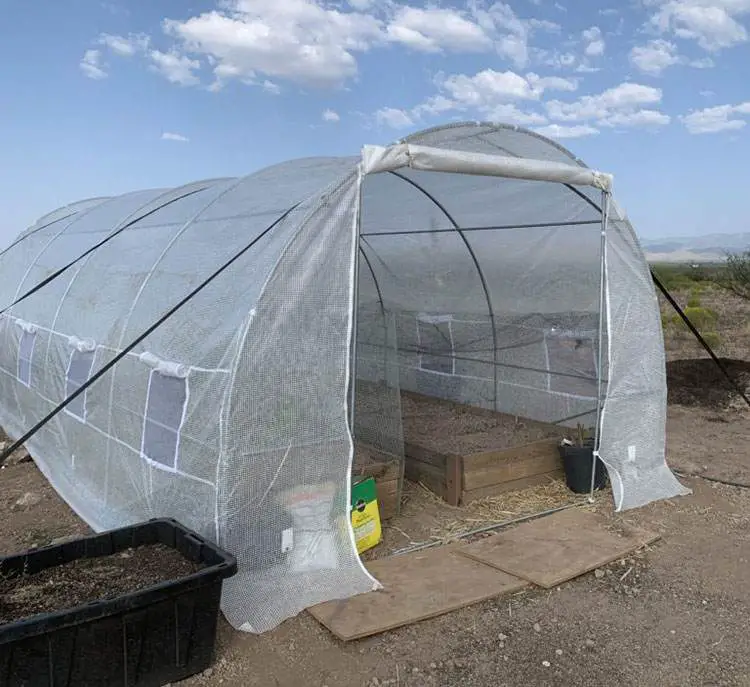
If that’s too much greenhouse for you, they also sell a smaller size right here.
Preparing for Desert Winds
Before purchasing it, I spoke with a friend and my husband about how we could secure it so our tornado-like winds wouldn’t take it. Between my husband and my friend, we came up with a couple of solid ideas that have (mostly) worked to this day.
The first was ratchet straps. Three ratchet straps are going over the front, middle, and back of the greenhouse. Then there are several metal spikes attached along to the bottom frame, securing it to the ground.
The greenhouse did not even sway when we had strong winds. However, one day we came home to witness the cover had been ripped up and almost entirely off.
The only reason it wasn’t gone is that it got caught on the ratchet straps. The frame was held perfectly, though, with no damage.
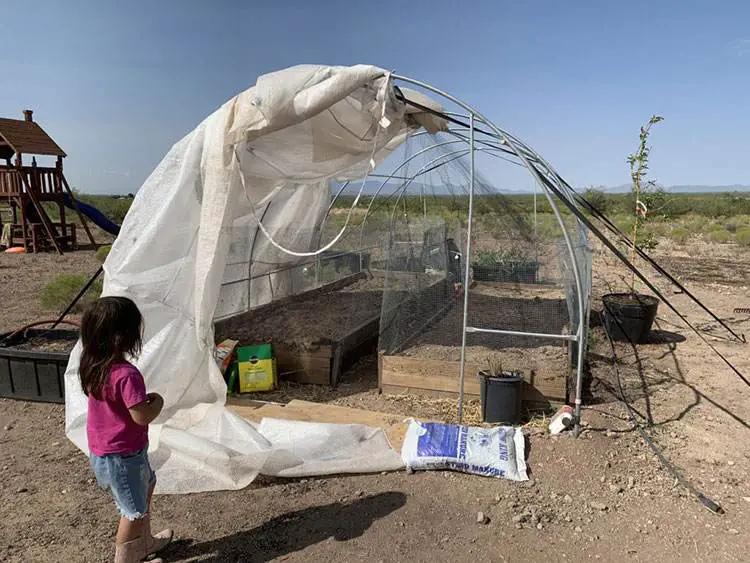
Luckily, we had a spare greenhouse cover. Being prepared pays off.
The main attachment points of the cover to the frame were bungee cords. They were no match for our winds.
They had already failed several times, and I had to replace them, but I just replaced them with more bungee cords; I didn’t think to replace them with anything different.
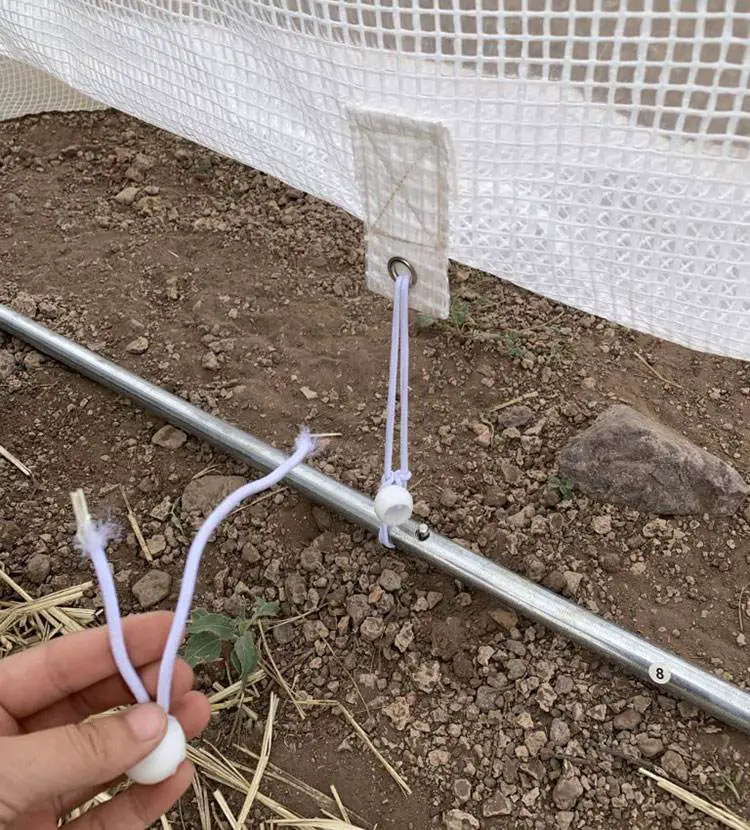
Zip Tie Upgrade
We replaced the bungee cords with zip ties. While they aren’t a perfect solution, either, they’re certainly better. So far, we haven’t had any other issues.
Even with these minor adjustments, it’s been a fantastic addition to our homestead.
Sometimes you won’t be able to find the ‘perfect’ addition, but you may be able to make it as perfect as possible with slight modifications.
Is a Greenhouse in the Desert Right for You?
A greenhouse is a fantastic addition to any garden if you need it. Many people live in areas where a greenhouse is unnecessary or simply wouldn’t work out for one reason or another.
A greenhouse is a fantastic option if you want to grow tropical plants, extend your growing season, or grow more specific types of plants that thrive in that atmosphere.
Before doing anything, I highly recommend figuring out what you want to grow and how big you’ll need it. Or maybe you just want to make mini-greenhouses around a few plants.
That’s not a way to get started. It’s really up to you and your needs.
Do you have desert gardening experience? I’d love to hear about it in the comments section.

